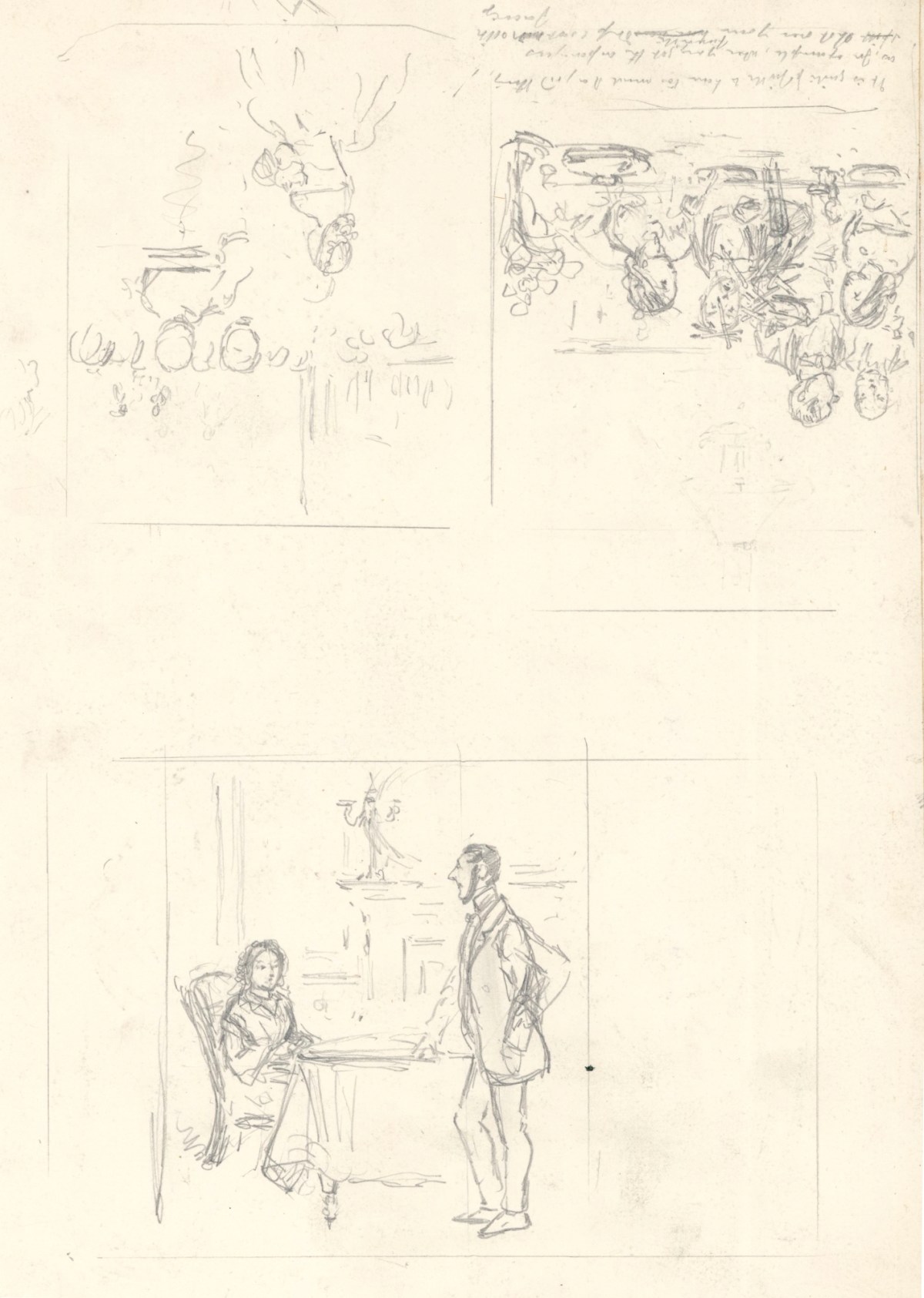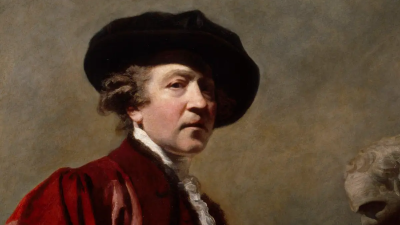
John Leech, Sketches for Punch cartoons, including 'Strange Bedfellows!', late 1850s.
Pencil on wove paper. © Photo: Royal Academy of Arts, London.
This image is not available to download. To licence this image for commercial purposes, contact our Picture Library at picturelibrary@royalacademy.org.uk

John Leech, Sketches for Punch cartoons, including 'Strange Bedfellows!', late 1850s.
Pencil on wove paper. © Photo: Royal Academy of Arts, London.
This image is not available to download. To licence this image for commercial purposes, contact our Picture Library at picturelibrary@royalacademy.org.uk
Sketches for Punch cartoons, including 'Strange Bedfellows!', late 1850s
John Leech (1817 - 1864)
RA Collection: Art
This object contains visual material that may be upsetting or offensive. Where possible, we are in the process of providing additional information about the object to contextualise its content, production and meaning in the society and era in which it was created. We continuously work to improve the documentation and presentation of our online Collections. If you have any comments or additional information about the object/object record, please contact us at library@royalacademy.org.uk.
The drawing on the recto of this sheet alludes to the 'Oaths Bill' of 1858, a campaign to amend the oath taken by Members of the UK Parliament to prevent the exclusion of Jewish politicians. Several MPs elected in the 1840s and 50s had been unable to take their seats because they were required to swear an oath 'on the true faith of a Christian'. The oath was changed for the House of Commons - but not the House of Lords - in 1858 with Lionel de Rothschild being the first Jewish MP to take his seat.
This sketch is for Leech's Punch cartoon, 'Strange Bed Fellows!' (27th June 1857, p. 257) which relates to the Oaths Bill. The figures facing each other appear to be caricatured depictions of Joseph Pease, the first Quaker MP to take his seat in 1833, and de Rothschild. The depictions are not particularly good likenesses and the characterisation of Rothschild is based on derogatory stereotypes of Jews which featured frequently in Punch at this time. De Rothschild is shown wearing three hats, a motif that would have been recognised during the Victorian era as a reference to Jewish clothes sellers (see Anthony S. Wohl, pp. 98-99). His facial features are also exaggerated and flamboyant clothing, the latter being very similar to Punch depictions of Benjamin Disraeli.
At around the same time as this cartoon was drawn, Leech also produced a cartoon of de Rothschild trying to force his nose between the doors of the House of Commons (see Spielmann, p. 105). In 1895, the critic M. H. Spielmann censured the anti-Jewish and anti-Catholic sentiments expressed in Punch during the mid-nineteenth century, with specific reference to Leech. He also noted that the magazine provoked complaints against the 'malice and grossness of the language' from the 1840s onwards.
On the verso are further sketches for different cartoons. At the bottom left of the page is a sketch of an elaborate dinner party. In the centre is a man with a large number of tongs stuck to his head and shoulders. These appear to have been inadvertantly dropped on him by the servant standing behind him. On the right is a sketch of a young woman at the back of a large crowd in a theatre and at the top of the sheet, reversed, is a sketch of a couple in a domestic interior with the woman seated at a table and the man standing in profile on the right. The latter is probably a sketch for the similar cartoon published as 'The Great Boon' in Punch, 34, June 5, 1858, p. 232. This referred to recent changes to the law which made divorce easier to obtain through the civil courts.
Further reading:
Stephanie Winkler, 'The fear of the ‘Other’ and anti-semitism: Representations of the Jews in Punch and Bram Stoker’s Dracula in the light of rising English nationalism', Oxford 2017
https://open.conted.ox.ac.uk/resources/documents/fear-%E2%80%98other%E2%80%99-and-anti-semitism-representations-jews-punch-and-bram-stoker%E2%80%99s
Anthony S. Wohl, '"Ben JuJu": Representations of Disraeli's Jewishness in the Victorian Political Cartoon', Jewish History, September 1996
M. H. Spielmann, The History of "Punch", London 1895, pp. 104-5 and 197-199
Most of the drawings in this group have been identified as John Leech's sketches for Punch magazine cartoons, carried out between the late 1840s and the early 1860s. The rest of the sketches are also likely to relate to Leech's work for Punch but it is possible that some were for other publications to which he contributed such as Once a Week and the Illustrated London News.
Many of the drawings relate to current affairs. Punch magazine, at this time, was very much supportive of the British establishment and Leech's characterisation of certain groups, both in political and more light-hearted images, played on and re-inforced negative racial stereotypes. These drawings, for instance, include such imagery relating to the Indian Rebellion of 1857, Irish nationalism and Jewish MPs.
Some of Leech's less politically-charged subjects are also represented here. Several cartoons satirise polite society while there are also sketches making fun of contemporary male and female fashions. One drawing depicts organ grinders and relates to the artist's intolerance of urban noise.
Leech was born in London and studied medicine at St Bartholemew's hospital but after his father was declared bankrupt in 1830 he began to sell sketches and cartoons for extra income. As a medic, Leech studied anatomical drawing but he had no formal training as an artist and his drawings are typified by a lively, almost frenetic, style. Leech built up a successful career as a cartoonist and illustrator and remains best known for the work he produced for Punch magazine. He was a friend of many artists and writers of the day including John Everett Millais, William Thackeray and Charles Dickens.
Object details
recto
verso
Start exploring the RA Collection
- Explore art works, paint-smeared palettes, scribbled letters and more...
- Artists and architects have run the RA for 250 years.
Our Collection is a record of them.



